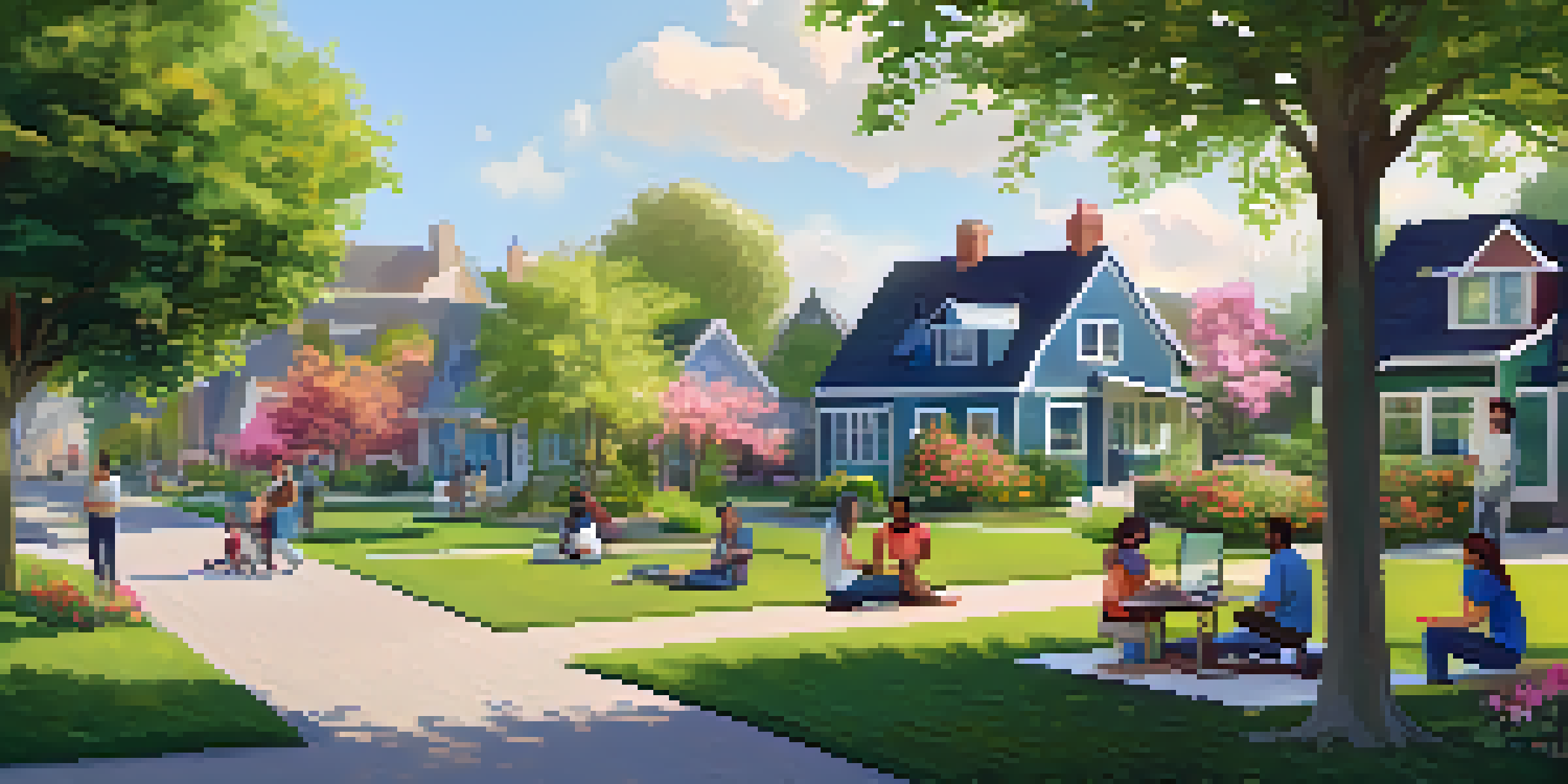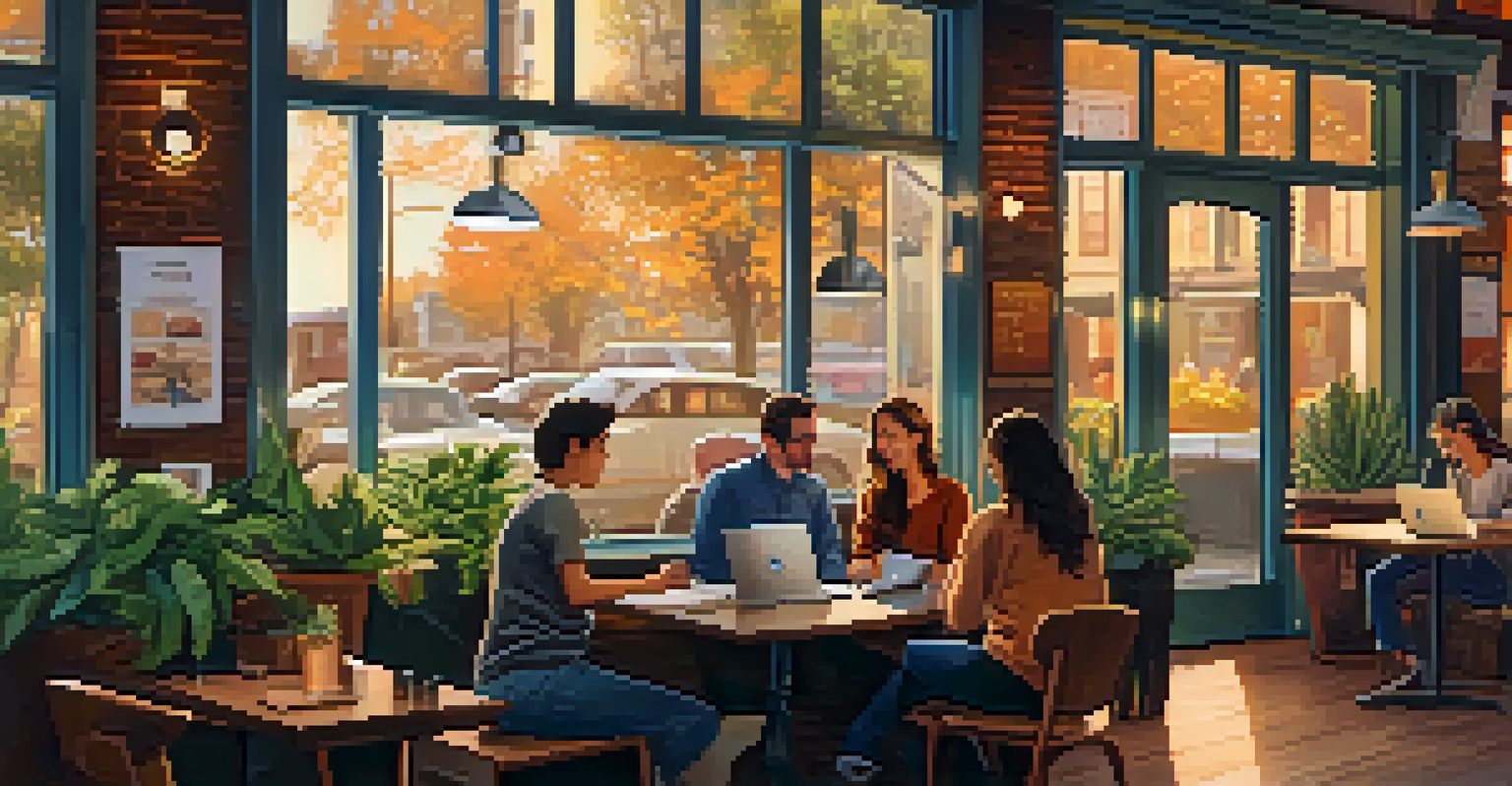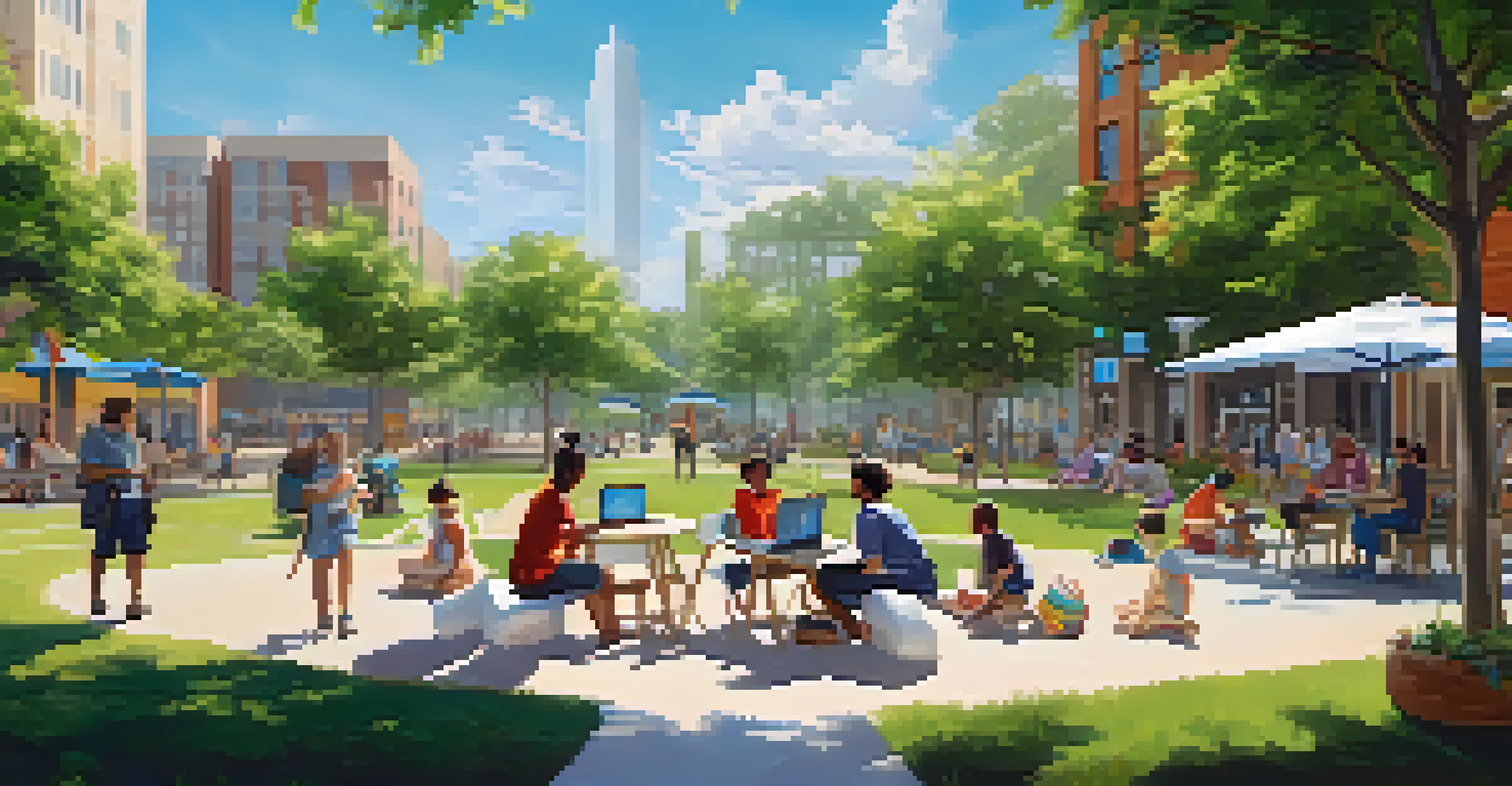The Impact of Remote Work on Neighborhood Revitalization

How Remote Work is Changing Where We Live
Remote work has transformed the traditional notion of where we should live. With professionals no longer tied to an office location, many are opting for suburban or rural settings that offer more space and a better quality of life. This shift is not just about personal preference; it’s reshaping local economies and community dynamics.
Remote work is not just about where you work, but where you live.
As people move away from crowded urban centers, they bring their skills, ideas, and spending power to smaller neighborhoods. This influx can lead to increased demand for local services, stimulating economic growth. In essence, remote work is allowing individuals to vote with their feet, choosing environments that align with their lifestyles.
Furthermore, this movement can lead to a renaissance for previously overlooked areas. Communities that may have struggled with declining populations are now experiencing a resurgence, as remote workers seek out affordable housing and a sense of community.
Boosting Local Economies Through Remote Workers
As remote workers settle into new neighborhoods, they contribute to the local economy in meaningful ways. Increased spending at local businesses can help revitalize storefronts and create jobs. Coffee shops, restaurants, and co-working spaces often see a boost in foot traffic, leading to a vibrant local culture.

Local governments may also benefit from this economic uptick through increased tax revenues. This additional funding can be reinvested into community projects, infrastructure improvements, and public services, fostering a cycle of growth and renewal. The new residents often advocate for enhancements that reflect their values, such as green spaces or cultural events.
Remote Work Reshapes Living Choices
The rise of remote work has led many professionals to choose suburban and rural areas for a better quality of life.
Ultimately, this economic revitalization can create a more appealing environment for future residents and businesses. The charm of a bustling neighborhood can attract even more remote workers, perpetuating the cycle of growth and community development.
Revitalization of Community Spaces and Amenities
Remote work not only impacts the economy but also encourages the reimagining of community spaces. Parks, libraries, and public squares are increasingly seen as essential hubs for both work and leisure. As people seek out inviting places to work remotely, local governments are motivated to enhance these spaces.
Communities that are vibrant and diverse are better equipped to innovate and grow.
For example, a local park might see the addition of Wi-Fi, comfortable seating, and shaded areas to accommodate remote workers. This transformation fosters a sense of community as people gather to work, meet, and relax, creating a vibrant atmosphere. These enhancements also benefit families and residents who seek outdoor activities.
The revitalization of community spaces leads to stronger social connections. When people spend time in shared environments, they form relationships that enhance the neighborhood's fabric, fostering a sense of belonging and community pride.
Cultivating a More Diverse Demographic Landscape
One of the most significant impacts of remote work on neighborhoods is the diversification of their demographic makeup. As remote professionals relocate, they bring varied backgrounds, experiences, and perspectives. This influx can significantly enrich a community's cultural tapestry.
Diverse populations contribute to a mix of ideas and innovations, sparking creativity and collaboration among residents. Local businesses may also adapt to cater to new tastes and preferences, further enhancing the vibrancy of the neighborhood. This cultural exchange can lead to festivals, markets, and events that celebrate diversity.
Economic Growth in Local Communities
As remote workers settle in new neighborhoods, they stimulate local economies through increased spending and job creation.
Furthermore, a more diverse demographic can drive inclusive community policies. As different voices come together, there is a greater chance for representation and advocacy on issues that matter to all residents, promoting a healthy, engaged community.
Environmental Benefits of Remote Work Trends
Remote work can have positive environmental impacts, especially as people move away from densely populated urban areas. Fewer commutes mean reduced carbon emissions, leading to cleaner air and less traffic congestion. As neighborhoods grow more sustainable, they also become more appealing to prospective residents.
Additionally, the demand for local services can encourage more eco-friendly practices. Local businesses may adopt sustainable methods, such as sourcing locally or minimizing waste, in response to consumer preferences. This shift not only benefits the environment but also enhances community identity.
As neighborhoods embrace greener practices, it can lead to a collective sense of responsibility towards the environment. Residents may engage in community gardening, recycling initiatives, or clean-up events, fostering a culture of sustainability.
Challenges Faced by Evolving Neighborhoods
While the impact of remote work on neighborhood revitalization is largely positive, it is not without its challenges. As demand for housing increases in these newly attractive areas, prices can rise significantly, leading to affordability concerns for long-time residents. Balancing growth and affordability becomes crucial to maintaining community integrity.
Moreover, the influx of new residents may create tensions between established locals and newcomers. Different lifestyles and priorities can lead to misunderstandings, necessitating open dialogue and community-building efforts. Addressing these concerns is vital for fostering a cohesive community.
Diversity Enriches Community Culture
The influx of remote professionals brings diverse backgrounds and perspectives, enhancing the cultural vibrancy of neighborhoods.
Local governments and community organizations play a key role in navigating these challenges. By implementing policies that promote inclusivity and sustainable growth, they can help ensure that revitalization efforts benefit everyone in the neighborhood, creating a harmonious environment for all.
The Future of Neighborhoods in the Remote Work Era
As remote work becomes increasingly normalized, the future of neighborhoods is likely to shift even further. Predictions suggest that more people will continue to choose locations based on lifestyle preferences rather than job proximity. This trend will likely foster a continued evolution of community dynamics and local economies.
In this new landscape, flexibility and adaptability will be essential for neighborhood growth. Communities that embrace innovation and respond to changing needs will thrive, while those that resist change might struggle. The ability to cultivate a welcoming environment for diverse populations will be key.

Ultimately, the future of neighborhoods in this remote work era holds exciting possibilities. By fostering connections among residents and adapting to their needs, communities can create vibrant, inclusive spaces that reflect the values of both new and long-standing members.